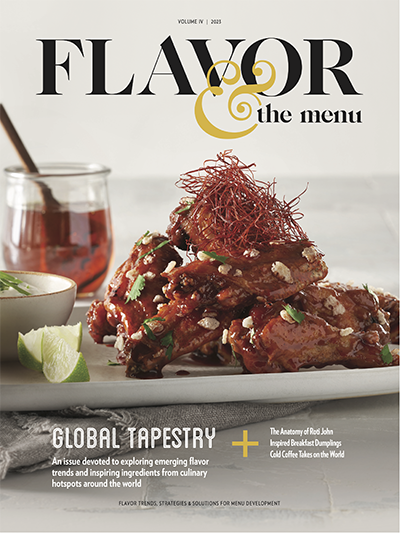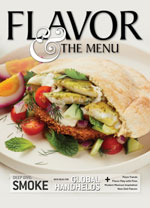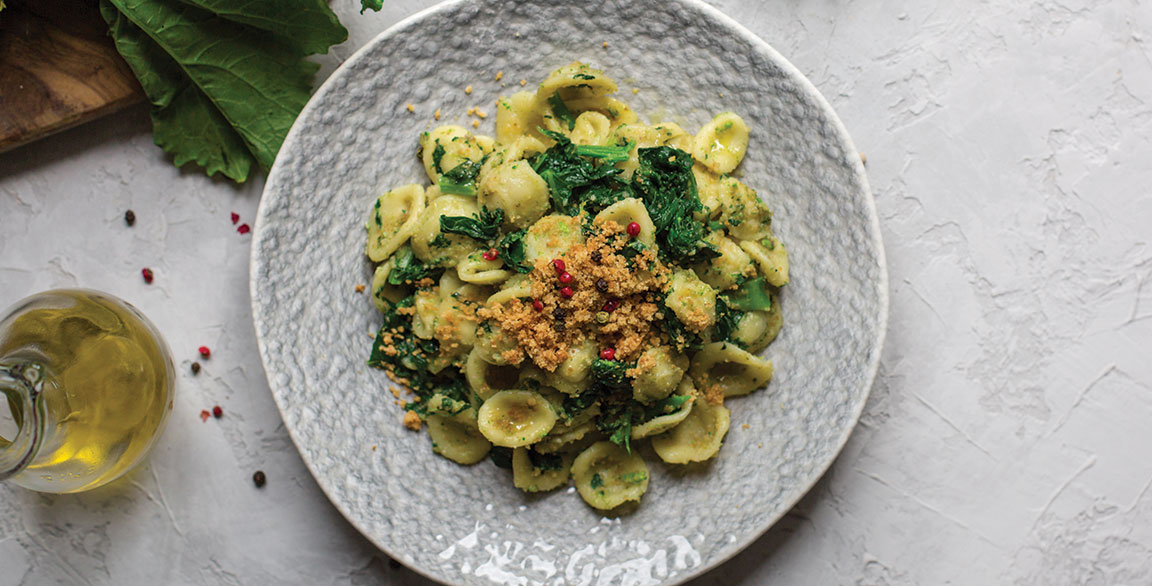

In menu development, looking to the past often helps shape the future. Culinary traditions run deep and tell stories of family and country. Nowhere is that more evident than in Italy through its beloved pasta. We frequently talk about the importance of menu narrative and conveying a sense of place through flavor and food, but pasta is often overlooked in this discussion because of its status as an everyday American staple.
If there’s storytelling around pasta, it tends to favor the sauce or the ingredients. But digging into the unique tale of that dish’s pasta shape and sharing it with guests adds dimension and color to the experience. Learning that shape’s history, and its place in Italian culture today, also helps build out surprising, authentic and delicious flavor pairings that may not yet have crossed over to this country or may have dissipated through the mists of time.
Here, we explore the history and the cultural touchpoints around four of Italy’s most prominent pasta shapes, hoping to inspire new culinary development.
Orecchiette: All Ears
The delicately curved creations of orecchiette (oh-reck-ee-ET-tay) derive linguistically from orecchia, meaning “ear,” and etta, meaning “small.” Made by combining farina di grano durum flour and water (no egg and, traditionally, not even a grain of salt), this pasta has been a hero staple of Puglia—the southwestern coastal spur of Italy’s boot—since the 12th century.
Historians debate its origin. Some cite the influence of similarly shaped dried pasta squares from France called crozets, while others point to the “Haman’s ear” cookie creations of Puglia’s Jewish community in the High Middle Ages.
Quick to dry and easy to store, this pragmatic pasta became an instant hit in Puglia, where it was also touted for its cucina povera or “poor food” traditions, born of necessity in this drought-prone land ravaged by frequent attacks. Today it remains a source of regional pride. In Latiano, an annual festival honors stacchioddi (the word for orecchiette in the Brindisi dialect), and Sannicandro di Bari celebrates it with a summer fest.
While the pasta can be enjoyed fresh any time of year, to get a front-row view of how it’s fashioned, travel to Bari, on the Adriatic coast, and visit the “Orecchiette Ladies” at work. In two narrow alleyways, Italian women line the streets, upholding tradition by preparing orecchiette by hand for onlookers.
Little bits are cut from finger-thick snakes of dough and pulled along the board with a rounded knife called a sferre until they pop up into a dome shape. The women reinforce this shape with a gentle press of the thumb—making the pasta slightly thinner in the center.
This dragging action, paired with the mini saucer shape, creates the perfect texture for holding a marinara topped with pecorino. Perhaps the most iconic orecchiette dish, however, is orecchiette con cime di rapa (commonly known as broccoli rabe). It’s prepared quite simply with greens blanched in heavily-salted water, then combined with olive oil, garlic and a pinch of crushed red pepper.
Gomiti: A Different Bent on Macaroni
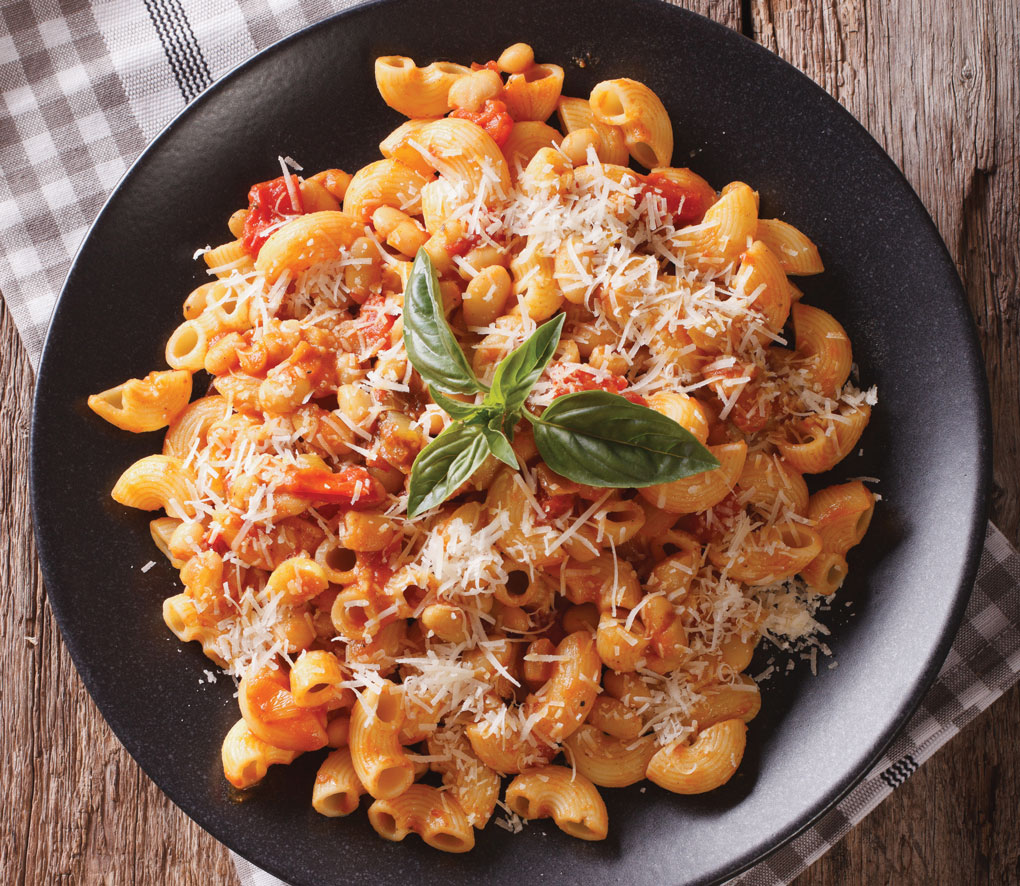
Thick sauces make their way into the tubular core of gomiti pasta, rewarding every bite with flavor.
Gomiti (goh-MEE-tee) means elbows, athough this short tubular pasta with a slight bend has nudged its way onto menus under many different names, including chifferi and pipette. In the U.S., it’s often simply called macaroni, but if you order maccheroni in Italy, you’ll likely be asked to narrow down your selection, since that’s an umbrella term for pasta, especially in southern regions, where it usually refers to all forms of long, hollow noodles, including some forms of spaghetti.
Some historians suggest that the Duchess of Parma, Maria Luigia, served as inspiration for this pasta. Her team of pastry chefs sought to replicate the look of the famous crescent-shaped Viennese pastry kipfel to help make their Austrian-born mistress feel closer to home. Language translations from Austrian to Italian led this durum-wheat flour and water combination to being known as chifferi.
Gomiti in Italy strays in a few key ways from the smooth crescents gracing bowls of American mac and cheese. More rounded and open on one end, slightly twisted and usually ridged (rigati), it holds sauce better and looks more like a shell than an articulating arm joint. This is why you’ll also find a close sibling on Italian menus listed as lumache, which translates to “snail.”
This pasta serves as the ideal catcher’s mitt for thick, meaty sauces, which make their way into the tubular core and reward every bite with flavor. One of the most famous applications of gomiti combines a garlic-infused ragù with a salty touch of tuna, capers and black olives. It’s also a fine carrier in heavier applications, like the classic Italian Sunday dinner, pasta al forno, where cooked pasta like gomiti is combined with caciotta sweet cheese, fontina and Parmigiano-Reggiano, then topped with béchamel and warmed in a wood-fired oven.
Capelli D’angelo: Light as Air
This pasta is in the spaghetti family, but is much, much thinner. Capelli means “hair” in Italian and one might be splitting hairs in defining different varieties by their dimensions, with capellini (fine hair) having an approximate diameter of 0.036 inches (thinner than vermicelli) and the angel hair variety being even thinner at 0.031 inches. Prepared with an ease evocative of its name, angel hair pasta cooks quickly, and its heavenly blend of flour, eggs and salt creates a mouthfeel so light and delicate that it virtually floats on your palate.
There’s speculation as to the origin of capelli d’angelo, with some claiming it originated in Calabria, and others contending Genoa or Lazio, but there is a record of it on menus in 17th century Rome. Its light consistency makes capelli d’angelo the perfect companion for simple chicken broth. This is affirmed by the long tradition of local nuns delivering soup laced with this healing noodle (along with further blessed capons or hens) to pregnant women and ailing noble family members. This soup still proves to be one of the best applications of the noodle today, though it can also make for a simple, comforting and flavorful dish, topped with garlic-infused olive oil, shaved Parmigiano-Reggiano, a very light sauce and/or seafood.
Another divine concoction is said to have been made by the Poor Clares, a Franciscan order of nuns, who used this pasta to create a sweet treat, capiddi d’angilu (also known as capiddi d’ancilu in Sicily), which is prepared by dipping cooked nests of noodles in egg, then frying and topping them with honey and cinnamon.
Linguine: Tip of the Tongue
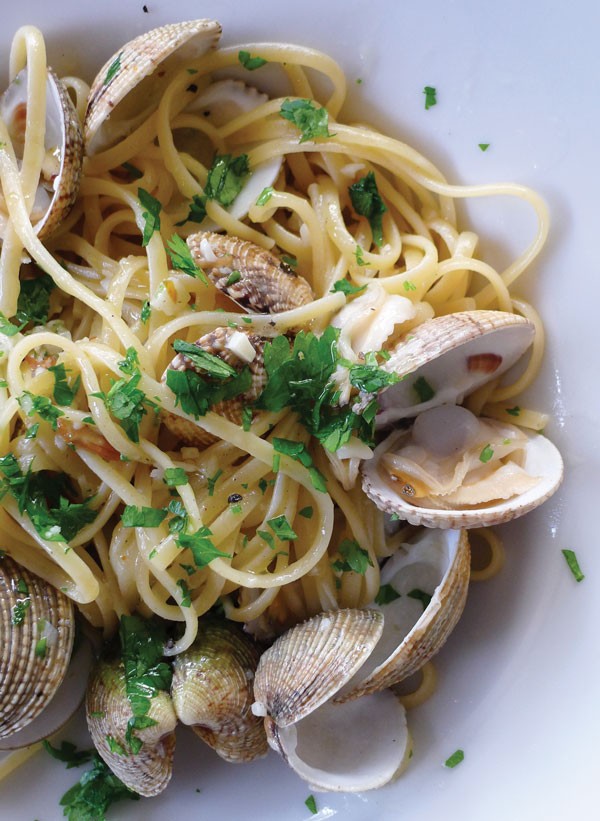
Linguine alle vongole (with clams) is an iconic Italian preparation that easily lends itself to signature adaptations.
Unlike the charming traditions associated with orecchiette, gomiti and capelli d’angelo, no such stories accompany the humble linguine. The history of this durum-wheat semolina and water variety must have been eclipsed by other pasta legends. A close cousin of spaghetti in length and basic width, linguine stands out in its resemblance to “little tongues” (as its name suggests): flat on the top and convex on the bottom. Many commercial brands now flatten both sides, so it’s basically a skinnier fettuccini sans egg—and even smaller if it’s linguine fini or linguette.
A few food researchers identify its origins in Campania, a region in southern Italy, though a more common belief asserts that linguine hails from Liguria on the northwestern coast. This is thanks to 18th century author Giulio Giacchero, who wrote about linguine’s sister pasta, trenette, which shares the same shape, albeit a little thinner in width and thicker in depth.
Today, linguine sticks its tongues out at history, voted the fourth-most popular pasta shape in the world last year, at least according to readers of the U.K.’s The Independent. And, unlike some pasta shapes, linguine is consumed across Italy, especially along the coastal regions. That’s because the flat surface is perfect for holding on to cream and butter sauces that partner so lovingly with seafood. Think: linguine alle vongole (with clams) or allo scoglio, featuring additional ocean celebrities: mussels, calamari and prawns. In Campania, linguine al limone stars the acidic bliss of Sorrento lemons.
One would be remiss not to mention the kismet connection between pesto Genovese and linguine, prepared with bright, peppery olive oil and basil, pine nuts, garlic and a pile of pecorino. Better yet, try it alla Ligure, adding a salty kick of anchovy. This combination helps one understand why there’s so little to be said about linguine’s past; the flavor leaves one positively speechless.

